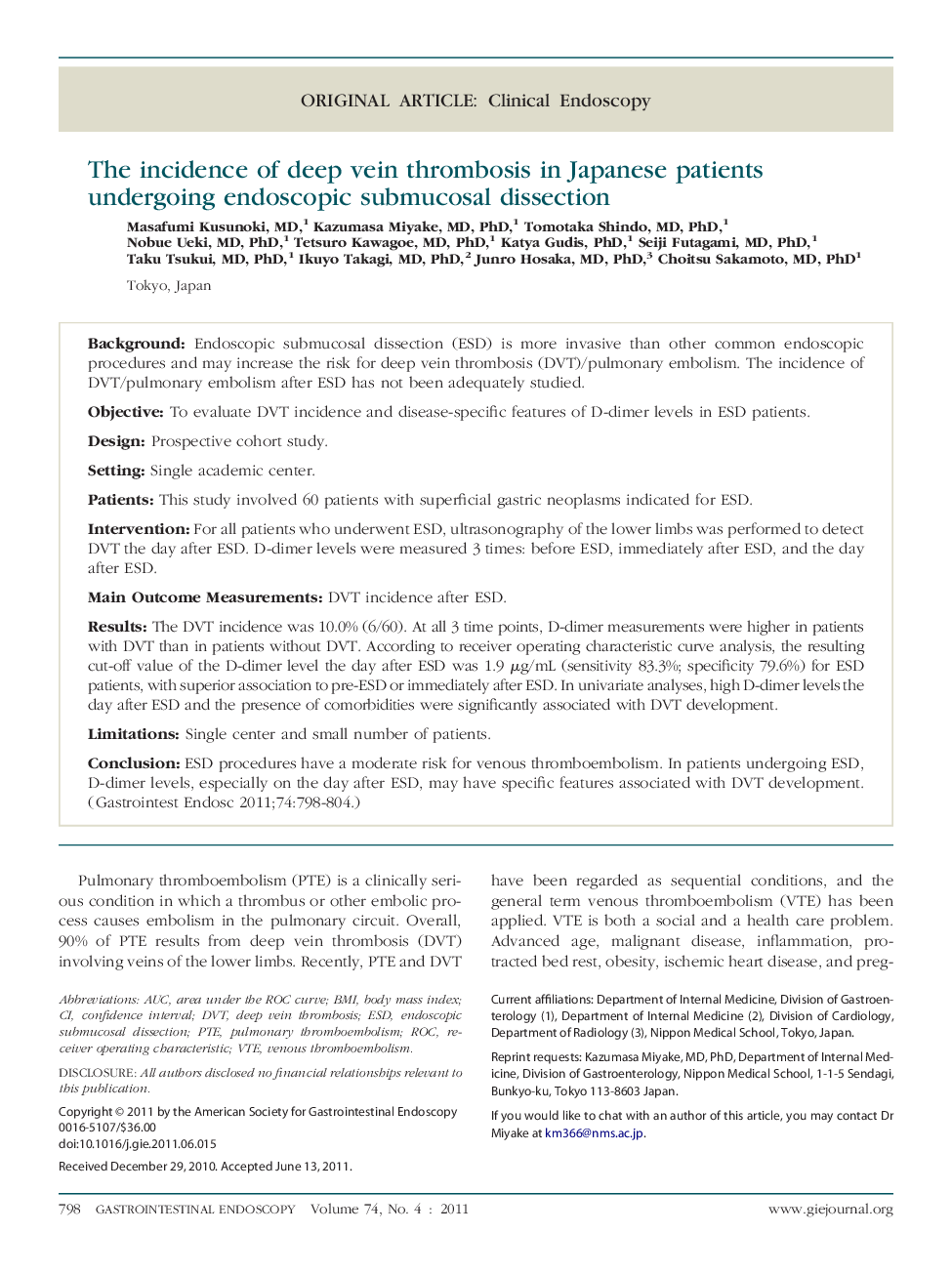| Article ID | Journal | Published Year | Pages | File Type |
|---|---|---|---|---|
| 3304523 | Gastrointestinal Endoscopy | 2011 | 7 Pages |
BackgroundEndoscopic submucosal dissection (ESD) is more invasive than other common endoscopic procedures and may increase the risk for deep vein thrombosis (DVT)/pulmonary embolism. The incidence of DVT/pulmonary embolism after ESD has not been adequately studied.ObjectiveTo evaluate DVT incidence and disease-specific features of D-dimer levels in ESD patients.DesignProspective cohort study.SettingSingle academic center.PatientsThis study involved 60 patients with superficial gastric neoplasms indicated for ESD.InterventionFor all patients who underwent ESD, ultrasonography of the lower limbs was performed to detect DVT the day after ESD. D-dimer levels were measured 3 times: before ESD, immediately after ESD, and the day after ESD.Main Outcome MeasurementsDVT incidence after ESD.ResultsThe DVT incidence was 10.0% (6/60). At all 3 time points, D-dimer measurements were higher in patients with DVT than in patients without DVT. According to receiver operating characteristic curve analysis, the resulting cut-off value of the D-dimer level the day after ESD was 1.9 μg/mL (sensitivity 83.3%; specificity 79.6%) for ESD patients, with superior association to pre-ESD or immediately after ESD. In univariate analyses, high D-dimer levels the day after ESD and the presence of comorbidities were significantly associated with DVT development.LimitationsSingle center and small number of patients.ConclusionESD procedures have a moderate risk for venous thromboembolism. In patients undergoing ESD, D-dimer levels, especially on the day after ESD, may have specific features associated with DVT development.
